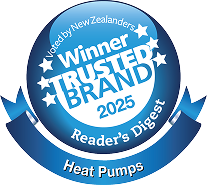
The Refrigerant Landscape in Summary:
- HFC phasedown by over 80% by 2037
- ETS government tax to increase in the future
- Lower GWP refrigerants are more flammable
- Refrigerant standards require expensive safety systems, that require ongoing maintenance
Industry Impact of International HFC Phasedown is Significant
The Kigali amendment to the Montreal Protocol is driving the phase-down of HFC gases, which contribute to global warming. New Zealand must reduce HFC gas usage by over 80% by 2037.

Refrigerant Import Rate vs. Consumption Rate
The rate of refrigerant usage is projected to exceed the allowable import amount for servicing by 2026. Switching to lower Global Warming Potential (GWP) refrigerants pushes this crisis date out further.
The Emissions Trading Scheme (ETS)

To effect change, the Emissions Trading Scheme (ETS) imposes a government tax on refrigerants based on their GWP. ETS levies are based on NZ carbon unit cost. Higher GWP refrigerants incur greater ETS levies, with levy rates projected to increase significantly in the future.
Data released in 2021 by the Climate Change Commission indicates that the carbon unit price will need to be over $NZ138 per tonne by 2030 and $NZ250 per tonne by 2050.*
*Source: Bluenotes, "What’s driving the carbon price in New Zealand?".
ETS Cost Impact on Refrigerants


- Current ETS cost for an 11kg jug of R410A is around $1,560, resulting in a sell price of approximately $2,700 per jug.
- Industry projections suggest that by 2025, R410A ETS costs could increase to $170/kg, leading to a sell price of around $5,500 + GST per jug.
- By 2030, if the ETS cost continues to rise at the same rate, it could reach $300/kg for R410A, resulting in a sell price exceeding $12,000 + GST per jug (if you can still get it).

Think about refrigerant costs to charge a VRV / VRF system which would commonly have ~30-40kg of R410A in it. If this system needed to be recharged in 5 years due to a refrigerant leak, the gas could cost upwards of $20,000. In 10 years this could be up to $50,000.
Common HVAC Refrigerants

Lower GWP Refrigerants are More Flammable
Proposed bans on higher GWP refrigerants in specific market categories will lead to the adoption of lower GWP but more flammable/toxic alternatives – posing challenges related to safety and risk mitigation.

Refrigerant Safety Requirements Standard
The NZS 5149 and NZS 60335 standards restrict the use of refrigerants to minimise dangers to occupants, property, and the environment. Directors and business operators can be held liable for breaches under the Health and Safety at Work Act 2015.
Expensive safety systems, including alarms, ventilation systems, shut-off valves, and pressure relief valves, are required by NZS 5149 / NZS 60335. These need ongoing maintenance throughout the life of a building.
This leads to higher operational expenditure for maintenance on large charge direct systems such as VRV.

Future Safety Regulation Challenges
Safety regulations for refrigerant products in overseas countries are becoming stricter, and New Zealand is likely to adopt these standards in the future, necessitating compliance with the latest safety directives.
The industry needs to anticipate future changes by developing products, infrastructure, and safety legislation. Training courses, installer registration, and qualification registers will be necessary.
Hydronic solutions such as Mitsubishi Electric R32 Hybrid or chillers running low GWP refrigerants are seen as a viable path forward in the industry to mitigate these challenges.

